| | | | | | | | | | | Axios What's Next | | By Bryan Walsh, Joann Muller and Erica Pandey ·Jul 30, 2021 | | Friday means the hybrid retail boom, subscription plans for your car software, and the best country to ride out the apocalypse. "What was next" trivia: On this day in 1956, what phrase was adopted as the U.S. motto? - Credit to reader Isaac Stephenson for being the first to note that John Lennon was quoted saying the Beatles were "bigger than Jesus" on July 29, 1966.
- Send your answer, along with tips and feedback, to whatsnext@axios.com.
Today's Smart Brevity count: 1,431 words ... 5 minutes. | | | | | | 1 big thing: Physical stores go hybrid with micro-fulfillment centers | 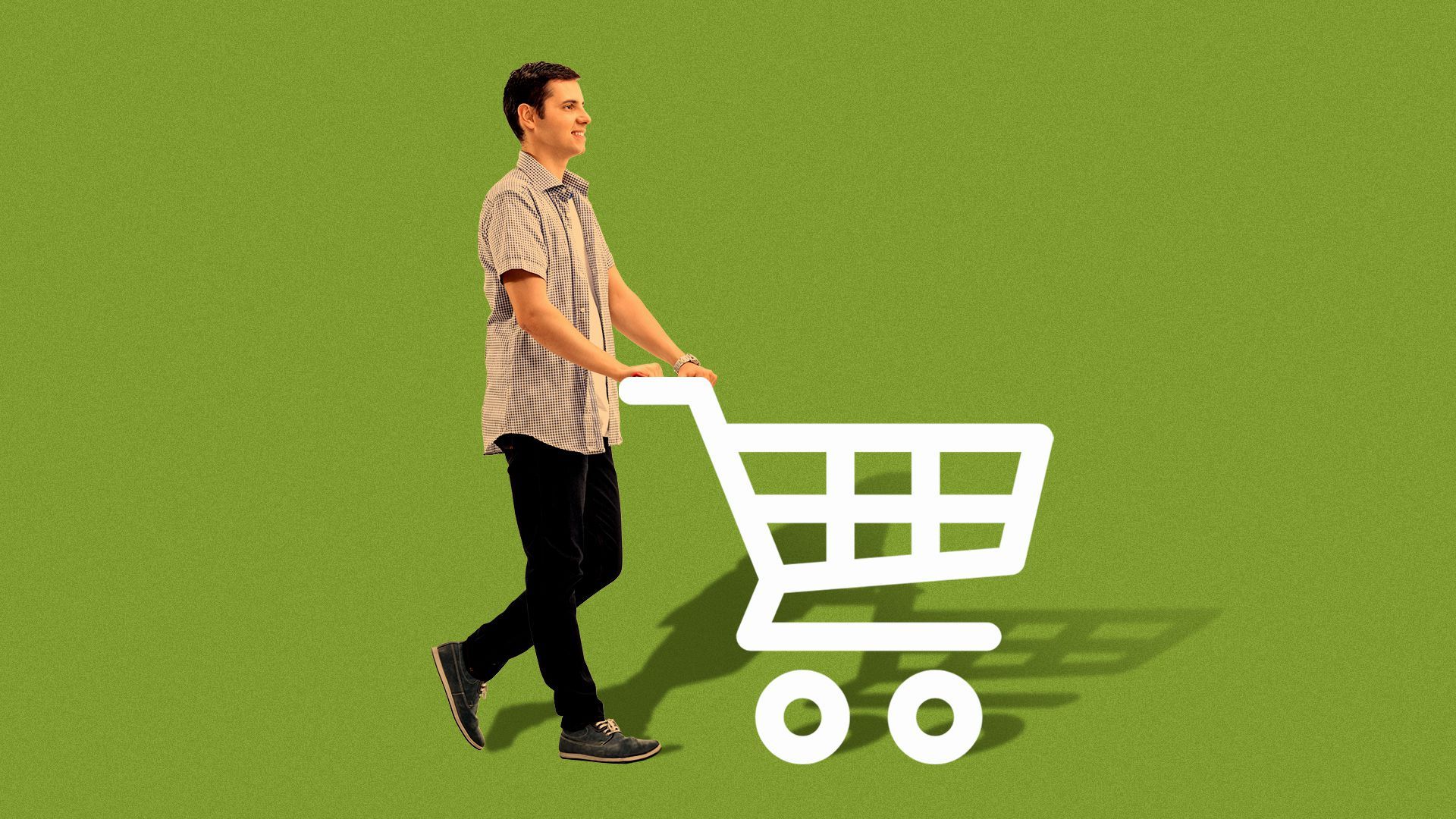 | | | Illustration: Sarah Grillo/Axios | | | | Retail stores of all sizes are turning part of their real estate footprint into logistics and fulfillment centers as they try to blend in-store shopping with e-commerce offerings, Kim Hart writes. Why it matters: In addition to staying competitive in a buy-everything-online environment, the trend is pushing brands to locate stores closer to dense population centers to try to reach consumers where they are and better cover the last-mile delivery zone to doorsteps. The backdrop: Brick-and-mortar retail businesses were forced to go digital when the pandemic shut down most physical stores in 2020. Restaurants quickly offered curbside pickup and delivery, and grocery stores implemented online ordering. Clothing retailers beefed up their e-commerce infrastructure to support the boom of online orders. The big picture: Amazon has greatly expanded the reach of its fulfillment centers in recent years, locating them outside cities to get merchandise closer to consumers, helping to make its fast delivery times possible. In the post-pandemic era, micro-fulfillment centers in or near brick-and-mortar stores are the antidote to giant warehouses. What's happening: Now that people are starting to venture out to stores again, retail brands have to cater to those who are now in the habit of shopping from home as well as those who prefer the in-store experience. - "The flexibility of shopping from the location most convenient for the customer will remain a primary driver of sales," according to a recent National League of Cities report on the future of retail.
- It's part of the "halo effect" — a retail industry term that describes how the existence of a brick-and-mortar store boosts online sales for the brand.
- For example, consumers may buy clothes from The Gap online because they live around the corner from a physical Gap store and it's easy to return things that don't fit, said Tracy Hadden Loh, a fellow with the Anne T. and Robert M. Bass Center for Transformative Placemaking at the Brookings Metropolitan Policy Program.
So major brands are trying to find smaller buildings near neighborhoods. Part of the space is designed to appeal to in-store shoppers, while the back is a mini-logistics center where online orders are collected and packaged and online order returns are sorted. Yes, but: Cities have obsolete retail footprints — like large malls and strip shopping centers — in the wrong places, often set apart from residential areas. - "I guarantee you that IKEA desperately wants to open a location near you, but they can't do it because retailers are having a hard time finding spaces that actually match these new omni-channel business models," Loh said. "Target and Walmart are trying to find smaller spaces where they can do new kinds of store concepts that are part shopping experience, part logistics and fulfillment center."
- "But finding these smaller retail spaces that are actually close to where people live is like trying to find a dinosaur in a lot of U.S. metro areas," she said.
Read the rest |     | | | | | | 2. Unlocking your car's newest tech could require a subscription | 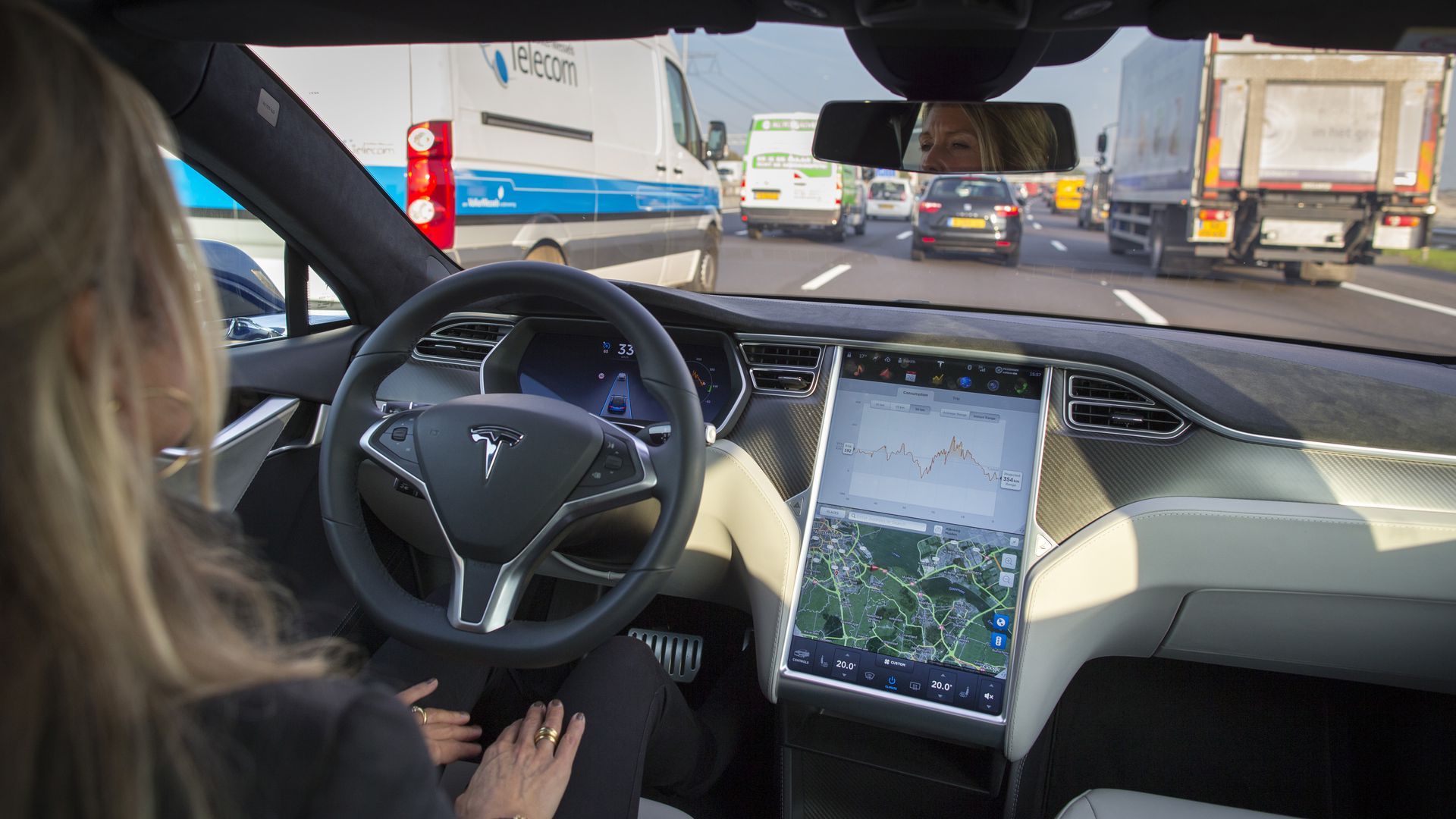 | | | Tesla is proposing a $199 monthly subscription for its assisted-driving system. Photographer: Jasper Juinen/Bloomberg via Getty Images | | | | Car technology is changing fast — and getting more expensive. But a more affordable alternative for some buyers is subscribing only to the car features they want, Joann Muller writes. Why it matters: Automakers drool over the prospect of collecting recurring revenue from car owners, even as they roll out regular software improvements. And people who lease their vehicles, or trade them in frequently, could avoid spending thousands of dollars on cutting-edge tech they only get to use for a few years. - "If you can get somebody hooked on a subscription, then it's like Netflix," said Sam Abuelsamid, principal analyst at Guidehouse Insights. "You tend to keep paying for it whether you use the feature or not."
Driving the news: Tesla said recently it would let customers subscribe to its "Full Self-Driving" advanced driver assistance package for $199 a month, rather than paying $10,000 upfront. The big picture: Subscription services dominate almost everything we consume today, whether it's video streaming, software or even meal kits. It's only a matter of time before mobility becomes a subscription service, too. - Automakers including Porsche, Volvo and GM's Cadillac brand have tried vehicle subscription schemes, with mixed success.
What's different now is that carmakers are offering subscriptions to individual features. - Mercedes-Benz will reportedly offer rear-wheel steering on its upcoming EQS electric sedan as a $575 annual subscription in Germany, writes The Drive.
- BMW, which backed off a plan to charge $80 a year for Apple CarPlay, still enables certain features like heated seats and steering wheels to be unlocked via subscription fees.
- Cadillac charges drivers $25 per month for its Super Cruise hands-free driving system after the three-year free trial expires.
Read the rest |     | | | | | | 3. This is the best country for surviving the apocalypse | 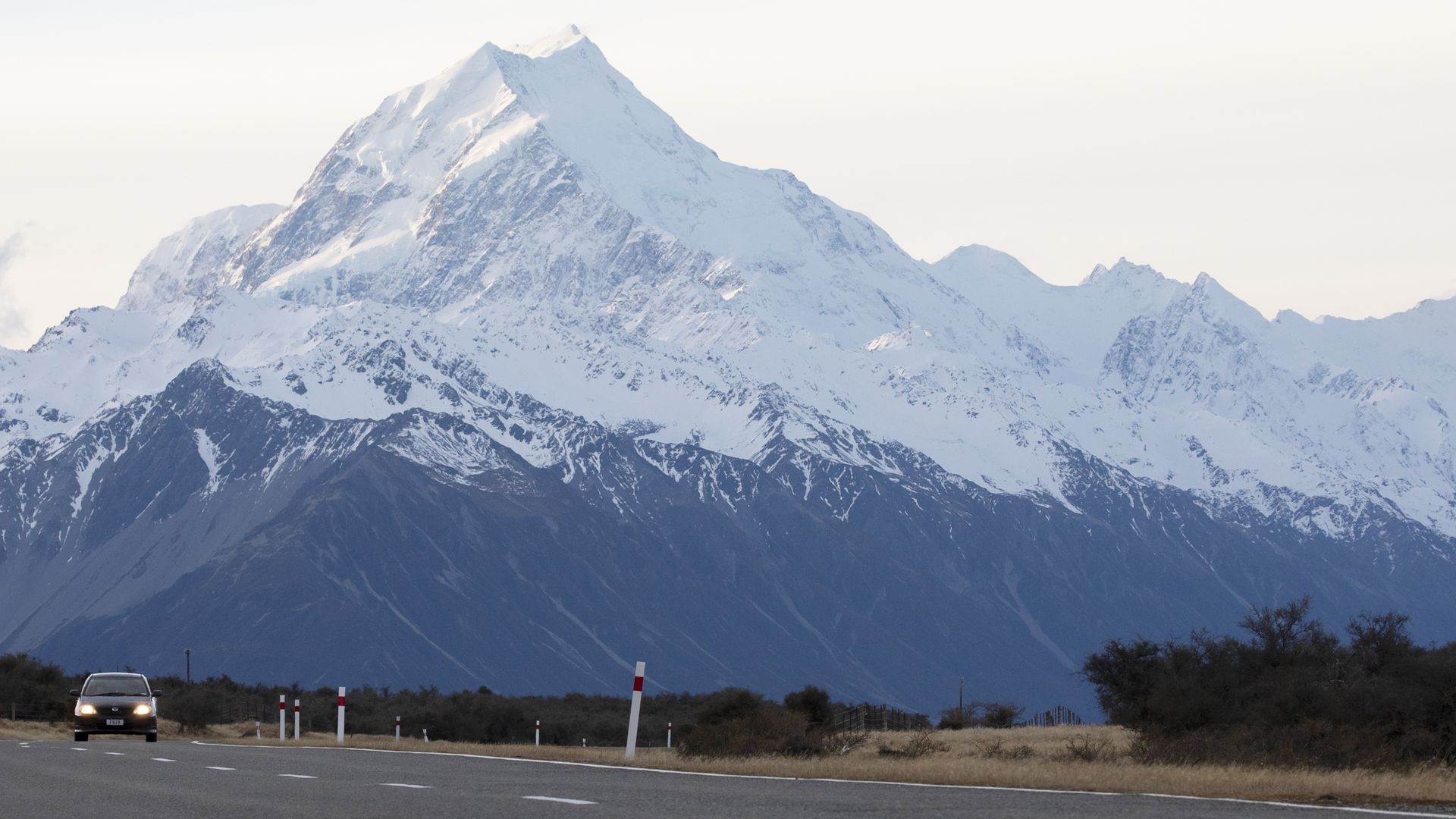 | | | New Zealand's epic Mount Cook. Photo: Sanka Vidanagama/NurPhoto via Getty Images | | | | A new study finds Kiwis have an edge when it comes to surviving total societal collapse, Bryan Walsh writes. Why it matters: Civilization is "in a perilous state," according to the researchers behind the study, and New Zealand's mix of geographical isolation and ability to grow its own food and maintain electricity and manufacturing makes it particularly well-suited to see it through the end times. What's happening: In a recent study published in the journal Sustainability, researchers identified what factors would make a country most able to withstand civilizational collapse, including the ability to be self-sufficient in food production and electricity, the ability to control borders from mass migration, a temperate climate and generally low population density. The winners (or not losers) are: New Zealand, followed by Iceland, Tasmania, the U.K. and Ireland. - New Zealand should be no surprise — the country has recently become a popular place for Silicon Valley billionaires in search of a doomsday bunker.
- Iceland has significant domestic renewable energy capacity, abundant fisheries, low population density and presumably whatever protective magic results from the presence of Bjork.
Yes, but: Relying on New Zealand as a "collapse lifeboat" features one large downside — it has severe seismic activity and happens to be the site of the Earth's last supervolcano eruption, some 26,500 years ago. The bottom line: So watch out for that. Read the rest |     | | | | | | A message from Axios | | A better way to communicate with your employees | | | 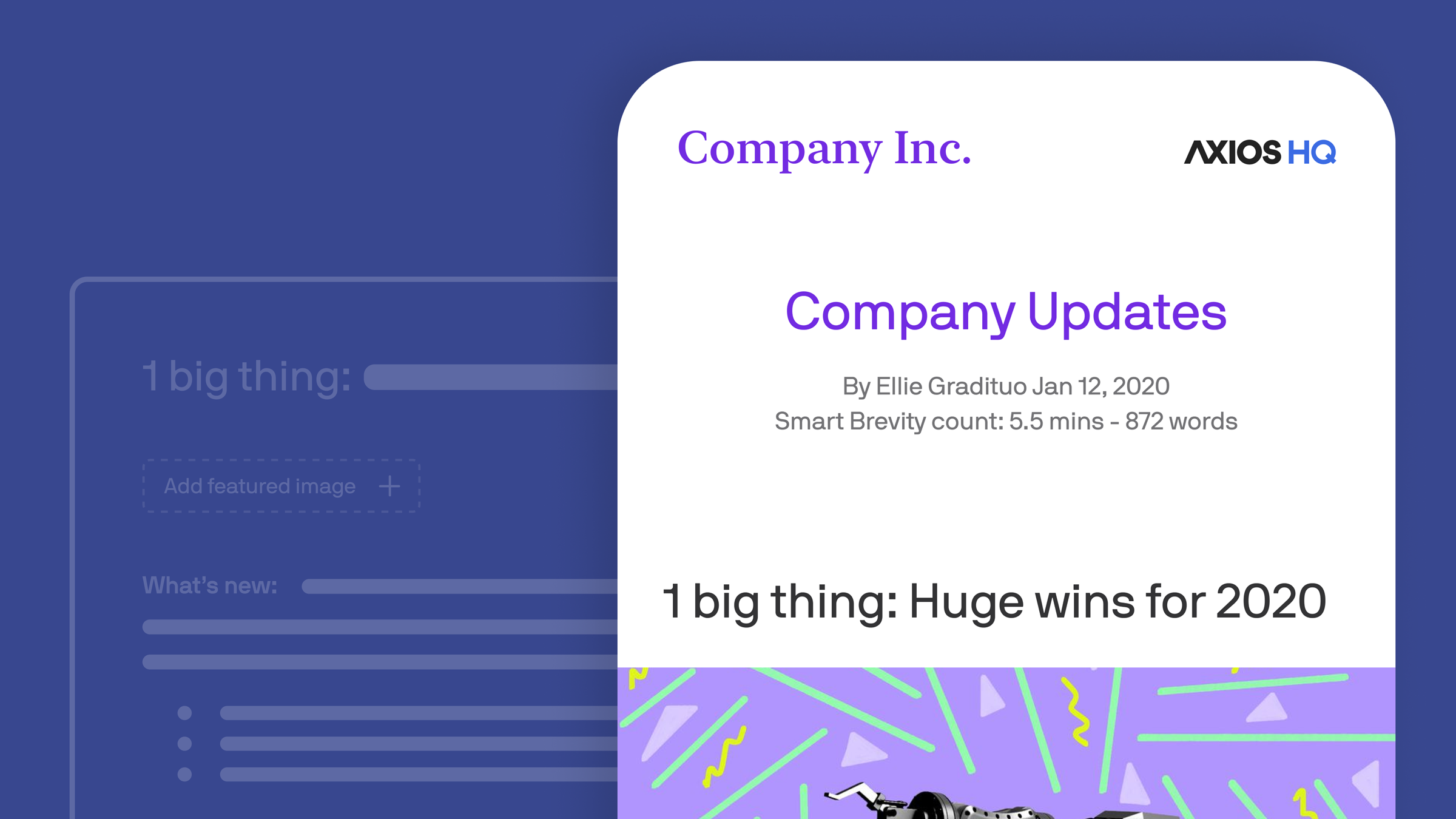 | | | | What's new: AxiosHQ is a simple writing tool — perfected by Axios writers and machine learning — that helps you write with clarity and efficiency. Why it matters: Users are seeing better alignment through more efficient internal communications. Learn more. | | | | | | 4. More startups are offering boozy desserts |  | | | Illustration: Sarah Grillo/Axios | | | | Eating ice cream on a hot summer day is one of the simplest pleasures in life. For those 21 and older, adding a little bit of booze might make it even better, Oriana Gonzalez writes. The big picture: Several startup companies across the country are infusing alcohol into delicious frozen desserts, creating one of this summer's hottest trends, Bloomberg reports. - Some states, including New York and California, allow alcoholic ice cream to reach 5% alcohol by volume (ABV) — the same alcohol percentage as a White Claw Hard Seltzer and a Truly Hard Seltzer.
By the numbers: The total revenue for alcohol-infused ice cream is expected to reach more than $450 million by 2025, after it exceeded $335 million in 2019, per Bloomberg. In New York, Tipsy Scoop, valued at $65.8 billion in 2020, requires that customers verify that they are 21 or older to try their flavors, such as Cake Batter vodka Martini and Tequila "Hot" Chocolate Ice Cream. - Founder Melissa Tavss told Bloomberg that her customer base is comprised of largely "the 30-ish crowd," adults in search of a light buzz.
As alcohol-infused desserts continue to gain popularity, alcohol companies have started to venture into the business. - The makers of Truly Hard Seltzer created Truly Lemonade Freeze Pops, which contain 5% ABV. Flavors range from regular lemonade to strawberry and mango lemonade.
Read the rest |     | | | | | | 5. 1 robostore thing: Trying out Amazon's palm scanner | 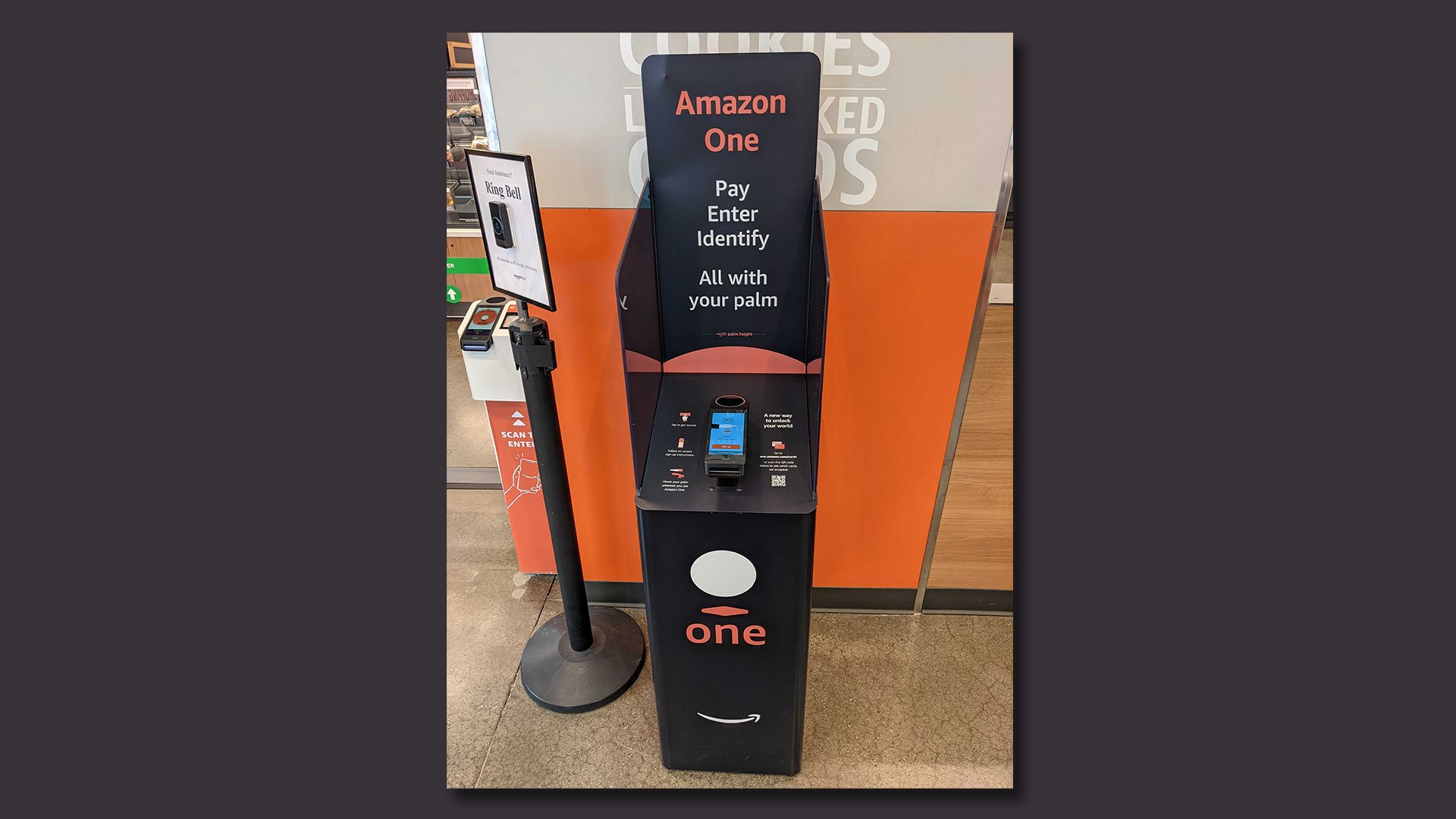 | | | The Amazon One palm reader. Photo: Nick Johnston / Axios | | | | Amazon's biometric palm reader is making its way into the company's Whole Foods and cashierless Go stores — and Axios editor-in-chief Nick Johnston, lover of all things automated, had to try it out on a visit to a Go store in New York, Bryan writes. What's happening: To use the Amazon One service, customers insert a credit card in a reader and then scan their palm, which associates their unique handprint with an account. Nick's thought bubble: "Instead of the unbearable burden of taking my phone out of my pocket and opening the app and loading the QR code and holding it over the sensor, I just hold my hand over it for a few seconds and ta da," he tells me. - "What was interesting was less how easy it was then how HORRIFIED everyone has been when I told them I have uploaded my palm print to Amazon."
The bottom line: Convenience trumps the horror of your colleagues. |     | | | | | | A message from Axios | | A better way to communicate with your employees | | |  | | | | What's new: AxiosHQ is a simple writing tool — perfected by Axios writers and machine learning — that helps you write with clarity and efficiency. Why it matters: Users are seeing better alignment through more efficient internal communications. Learn more. | | | | Thanks for reading! If this email was forwarded to you, subscribe here! |  | | It'll help you deliver employee communications more effectively. | | | | | | Axios thanks our partners for supporting our newsletters. If you're interested in advertising, learn more here.
Sponsorship has no influence on editorial content. Axios, 3100 Clarendon Blvd, Suite 1300, Arlington VA 22201 | | | You received this email because you signed up for newsletters from Axios.
Change your preferences or unsubscribe here. | | | Was this email forwarded to you?
Sign up now to get Axios in your inbox. | | | | Follow Axios on social media:    | | | | | |









No comments:
Post a Comment